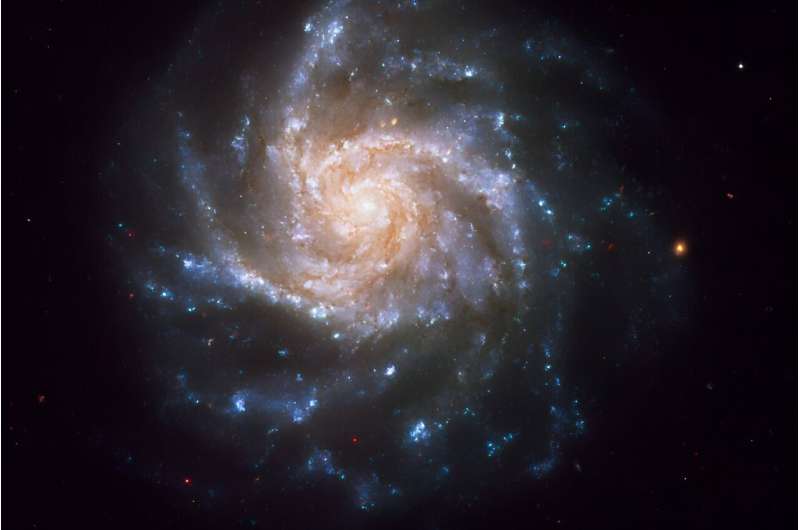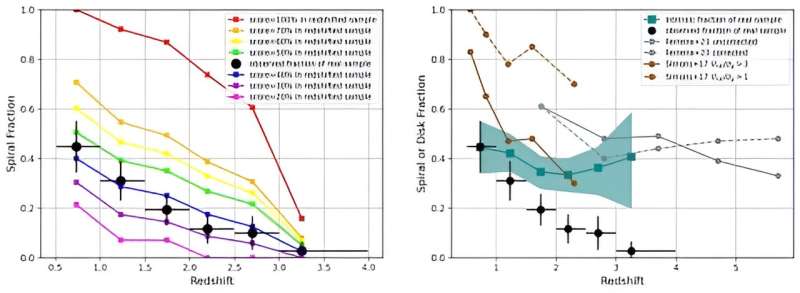This article has been reviewed according to Science X's editorial process and policies. Editors have highlighted the following attributes while ensuring the content's credibility:
fact-checked
preprint
trusted source
proofread
The early universe was surprisingly filled with spiral galaxies, research suggests

If we could travel far beyond our galaxy, and look back upon the Milky Way, it would be a glorious sight. Luminous spirals stretching from a central core, with dust and nebulae scattered along the spiral edges. When you think about a galaxy, you probably imagine a spiral galaxy like the Milky Way, but spirals make up only about 60% of the galaxies we see. That's because spiral galaxies only form when smaller galaxies collide and merge over time. Or so we thought, as a new study posted to the arXiv preprint server suggests that isn't the case.
The standard model of galaxies is that they evolve over time. Galaxies formed from vast clouds of primordial hydrogen and helium, and so likely had a fairly amorphous structure at the beginning. Given the density of the early universe, galactic collisions and mergers were common, which gave galaxies their rotations and caused them to form disks and spirals. All of this takes time, so we would expect spiral galaxies to be fairly common in the local universe, but rare in the early universe.
This new work used data from the Cosmic Evolution Early Release Science Survey (CEERS), which was gathered by the James Webb Space Telescope. The team identified 873 galaxies greater than 10 billion solar masses, with redshifts between z = 0.5 and z = 4. Galaxies at this redshift are between 5 billion and 12 billion years old, so they span the range of early galaxies to modern ones.

Of these galaxies, 216 were classified as spirals. The authors were careful to note that some may be merging galaxies that were misclassified, but even then 108 of the galaxies were unanimously classified as spirals by evaluators. When the team arranged them by redshift, they found that while the fraction of spirals decreased as you went further into the past, the fraction of spirals at redshifts above z = 3 was much higher than expected. When the team calibrated observations, they found about a fifth of galaxies at z = 3 are spiral galaxies. These very early galaxies would have had to become spirals less than two billion years after the Big Bang, meaning that there would have been little time for mergers and collisions to be the cause.
In other words, many galaxies evolved into disk-shaped spirals quite early in the universe. So while collisions and mergers do play a role in the formation of spiral galaxies, there are likely other factors that come into play. At the moment it isn't clear what those factors are. With future data from JWST, the team hopes to determine just how these early galaxies evolve, and why spiral galaxies have been around for so long.
More information: Vicki Kuhn et al, JWST Reveals a Surprisingly High Fraction of Galaxies Being Spiral-like at 0.5≤ z≤4, arXiv (2023). DOI: 10.48550/arxiv.2312.12389
Journal information: arXiv
Provided by Universe Today





















